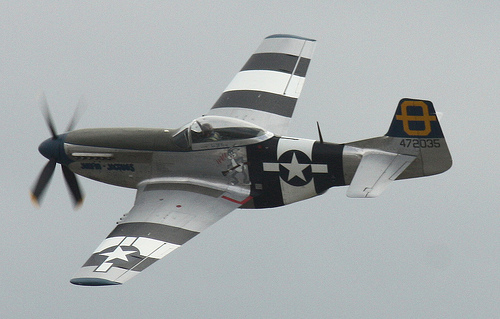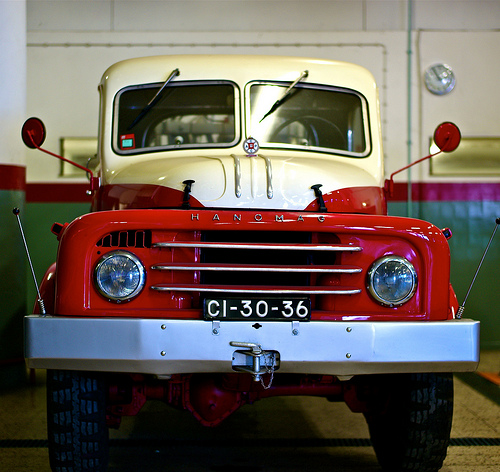A few nice prototype machine organization images I found:
Mustang P51 (Jumping Jacques) At Southend Air Show May 2011

Image by Feggy Art
The North American Aviation P-51 Mustang was an American extended-variety single-seat Planet War II fighter aircraft conceived, designed and constructed by North American Aviation (NAA) in response to a specification issued directly to NAA by the British Purchasing Commission the prototype NA-73X airframe was rolled out, despite the fact that nonetheless minus engine, 102 days after the contract was signed. The 1st production Mustangs had been utilised by the Royal Air Force (RAF) as tactical-reconnaissance aircraft and fighter-bombers. From late 1943, P-51Bs
(supplemented by P-51Ds from mid-1944) were used by the USAAF’s Eighth Air Force as bomber escorts in raids over Germany, even though the RAF’s 2 TAF and the USAAF’s Ninth Air Force utilised the Merlin-powered Mustangs as fighter-bombers, roles in which the Mustang helped ensure Allied air superiority in 1944. The P-51 was also in service with Allied air forces in the North African, Mediterranean and Italian theatres, and saw restricted service against the Japanese in the Pacific War. At the commence of Korean War the Mustang was the United Nations’ major fighter but the function was quickly shouldered by jet fighters, which includes the F-86, following which the Mustang became a specialised ground-attack fighter-bomber. In spite of getting superseded by jet fighters the Mustang remained in service with some air forces until the early 1980s.
The Mustang was first created to use a low-altitude rated Allison V-1710 engine and was primarily employed in the tactical-reconnaissance and fighter-bomber roles. The definitive version, the P-51D, was powered by the Packard V-1650-7, a licence-built version of the Rolls-Royce Merlin 60 series two-stage two-speed supercharged engine, and was capable to be utilized as a extended-range bomber escort. The P-51D was armed with six .50 caliber (12.7 mm) M2 Browning machine guns.
After Planet War II and the Korean War, a lot of Mustangs have been converted for civilian use, specifically air racing. The Mustang’s reputation was such that, in the early 1960s, the Ford Motor Organization made a new youth-oriented coupe which was named following the fighter.
The North American Aviation P-51 Mustang was an American long-variety single-seat Planet War II fighter aircraft conceived, designed and constructed by North American Aviation (NAA) in response to a specification issued straight to NAA by the British Purchasing Commission the prototype NA-73X airframe was rolled out, even though nonetheless minus engine, 102 days soon after the contract was signed. The initial production Mustangs have been utilised by the Royal Air Force (RAF) as tactical-reconnaissance aircraft and fighter-bombers. From late 1943, P-51Bs
(supplemented by P-51Ds from mid-1944) had been used by the USAAF’s Eighth Air Force as bomber escorts in raids over Germany, although the RAF’s 2 TAF and the USAAF’s Ninth Air Force employed the Merlin-powered Mustangs as fighter-bombers, roles in which the Mustang helped guarantee Allied air superiority in 1944. The P-51 was also in service with Allied air forces in the North African, Mediterranean and Italian theatres, and saw restricted service against the Japanese in the Pacific War. At the commence of Korean War the Mustang was the United Nations’ primary fighter but the function was rapidly shouldered by jet fighters, including the F-86, soon after which the Mustang became a specialised ground-attack fighter-bomber. In spite of getting superseded by jet fighters the Mustang remained in service with some air forces until the early 1980s.
The Mustang was initial developed to use a low-altitude rated Allison V-1710 engine and was mostly used in the tactical-reconnaissance and fighter-bomber roles. The definitive version, the P-51D, was powered by the Packard V-1650-7, a licence-constructed version of the Rolls-Royce Merlin 60 series two-stage two-speed supercharged engine, and was able to be employed as a extended-range bomber escort. The P-51D was armed with six .50 calibre (12.7 mm) M2 Browning machine guns.
Following Globe War II and the Korean War, numerous Mustangs were converted for civilian use, specifically air racing. The Mustang’s reputation was such that, in the early 1960s, the Ford Motor Firm made a new youth-oriented coupe which was named soon after the fighter.
Reproduced from Wikipedia below the GNU Inventive Commons License.
ACP (Touring Club of Portugal) tow (Hanomag, 1959)

Image by pedrosimoes7
Lisbon, Portugal
in Wikipedia
History
Hanomag Railway Engine constructed in 1932
The organization dates back to 1835 when Georg Egestorff founded a business called Eisen-Giesserei und Maschinenfabrik Hannover to create little steam engines. They quickly began making farm machinery and in 1846 constructed their initial railway locomotive for the Hannover State Railways. By 1870 they had created 500 locomotives and in 1871 changed their name to Hannoversche Maschinenbau AG. Road vehicles followed when in 1905 they received a contract for steam waggons for the German army.
Petrol engined vehicles followed in 1912 with a line of farm tractors.
[edit]Cars
Hanomag two/10PS "Kommissbrot"
Hanomag 1.five Litre "Rekord"
By the 1920s, the industry for steam road autos was in terminal decline and Hanomag looked to automobiles as the future, particularly economy models. In 1925, they launched the Hanomag 2/10, a 370 kg (816 lb) open two seater with a rear-mounted 500cc[1] single-cylinder water cooled engine. Named Zweisitzer Limousine (two-seat limousine)[2] by the organization, its rounded front and rear gained it the nickname Kommissbrot for its resemblance to a loaf of Army bread. Although created in large numbers, 15,775 in total, it did not make a lot money for the company and in the late 1920s the railway locomotive division was sold to Henschel & Son of Kassel.
A much more standard car, the 3/16PS, and the very first diesel engined tractors, came in 1928, taking the organization back into profit. Hanomag were badly hurt by the drop in trade in 1929 and built a massive stock of unsold cars. Things enhanced in 1930 and the business got 14 per cent of the domestic auto market, second place behind Opel, but in 1931 a new crisis came when the banks referred to as a loan. The factory was mortgaged to Hannover City and the Vereinigte Stahlwerke trust and the organization relaunched as Hanomag Automobil und Schlepperbau GmbH.
For 1932, a new little car, the 1.1 Litre, renamed the Garant in 1934, was announced and sold effectively allowing two shift functioning to be introduced and it was joined by the larger 1.5 litre Rekord (a name later used by Opel) in 1933 with independent front suspension. A diesel Rekord was shown at the 1936 Berlin Motor Show.
[edit]Military autos
In the course of Planet War II, the vehicle plant produced military vehicle engines, a military version of their heavy tractor renamed the SS-one hundred, and half track troop carriers. Hanomag 20 B, a 4-wheel-drive Little Unit-Personnel Carrier was developed 1937-1940 (ca. 2000) beneath the parentage of Stoewer. Capacity issues by Stoewer resulted in co-production by each BMW and Hanomag. Collectively the 3 makers created ca. 10.000 units. The special four-wheel-steering system was fitted on most models. Operating a "lock-level" in between the front seats created the steerable rear axle turn sideways to a specific angle.
The single most crucial and iconic military car to be designed and constructed by Hanomag in the course of Globe War II was the Sd.Kfz. 251 half-track (typically known as just "the Hanomag") with a total production numbering just over 15,000. Constructed to safeguard and transport the Panzergrenadier mechanized infantry forces, it was by far the most frequent German armoured troop-carrying automobile of WWII, and a direct precursor to the armoured personnel carriers of nowadays. In comparison to the most widespread Allied half-track of the war, the M3 Half-track, the Sd.KFz 251 was slower and reduce-powered but with thicker, sloping side armor that provided better protection the flat-sided M3 was at 1 point panned as the "Purple Heart Box" for becoming unable to stop 7.92mm bullets at close variety, although the Hanomag’s sloping side armor deflected the .30-caliber bullets of the Allies with no similar problem.
Post war production resumed making trailer units followed by tractors and in 1949 a 1.5 ton truck. Though prototypes have been produced, no vehicles had been made postwar. Rudolph Hiller, who had been president of Phänomen trucks, joined the board and restructured the company by arranging for it to join the Rheinstahl consortium in 1952.
[edit]Merger & Split
Hanomag-Henschel F 65
In 1964, Rheinstahl took more than Henschel-Werke and in a reverse of history the company was merged with Hanomag.
Hanomag Perfekt 400e
The farm tractor operation was sold to Massey Ferguson and in 1969 the truck creating division of Hanomag-Henschel went to Daimler Benz, leaving the Hannover functions generating earth-moving machinery for Massey Ferguson.
In 1989, the world’s second largest building machine manufacturer, Komatsu, purchased a share of Hanomag AG and because 2002 Komatsu Hanomag GmbH has been a one hundred% subsidiary of the international organization.
[edit]Construction machinery
Hanomag loader
In Hanover, the firm is creating wheel loaders ranging from 54 to 353 hp (263 kW) and given that 2005 also has been creating wheeled excavators from 14 to 22 tons. Thanks to the European Technical Center (EUTC), these correspond to the latest state of technology. In Hanover, the firm develops construction machines which meet varied requirements of buyers all more than Europe as nicely as for specific goods also worldwide.